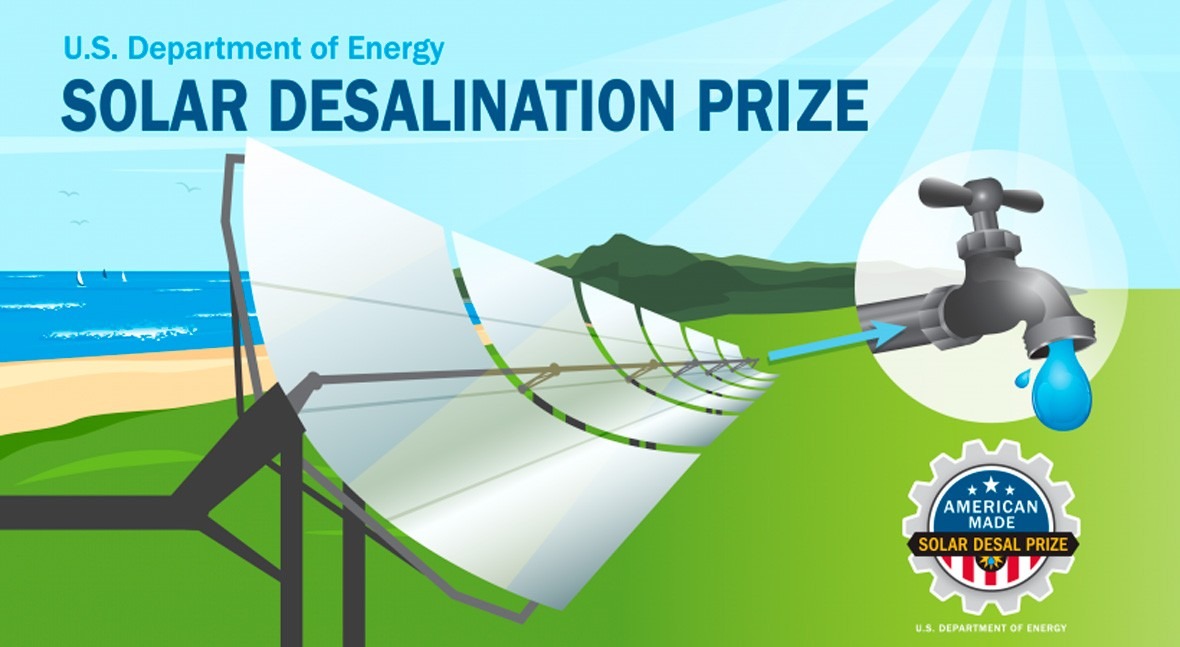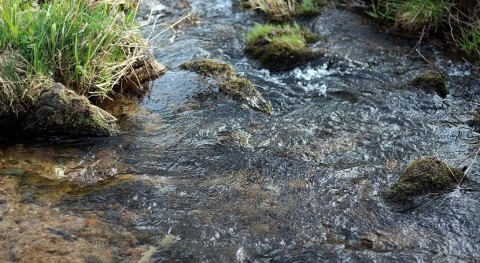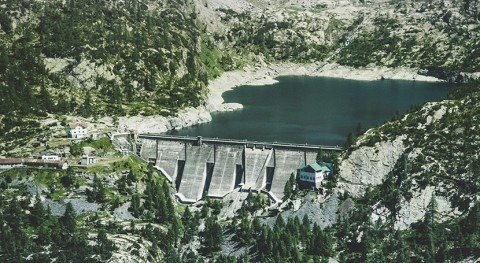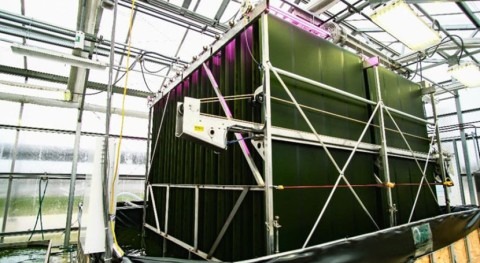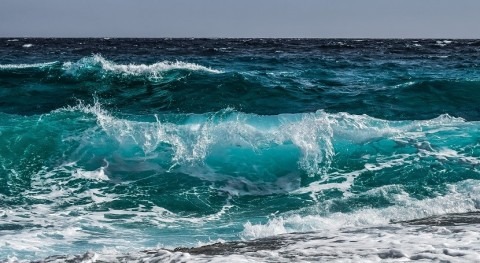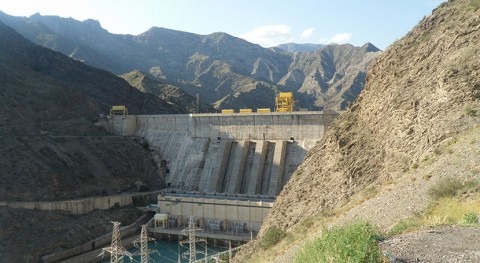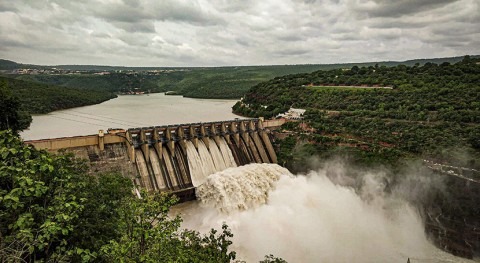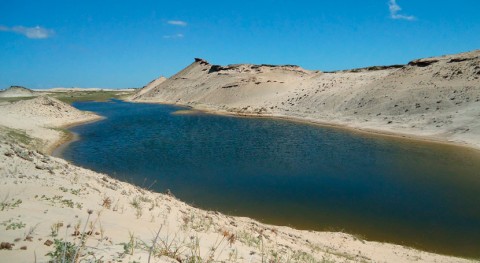The U.S. Department of Energy (DOE) launched the Solar Desalination Prize competition as part of the Water Security Grand Challenge, an initiative to advance transformational technology and innovation to meet the global need for safe, secure, and affordable water, seeking new ideas for desalination systems that can be used in diverse settings. Participants submit innovative concepts, with a pathway to its commercialization. Each stage of the competition will have increasing prize amounts, totalling millions of dollars. By the end, the teams will have designed a solar-thermal desalination system, obtained the necessary permits, built it, and demonstrated the operation. Furthermore, such demonstrations can lay the foundation for more applications of solar thermal technologies. We spoke with Avi Shultz, program manager of the Concentrating Solar-Thermal Power Program at the DOE, to learn about the details of the program and what it is trying to accomplish.
.jpg)
Question: Can you tell us briefly about your career path and your current involvement with the Solar Desalination Prize?
Answer: I’m a chemist by education and training and have always been strongly motivated by the vast potential that scientific innovation has to dramatically improve people’s lives and help develop solutions to society’s biggest challenges. My doctoral and post-doctoral research was focused on developing new classes of supra-molecular catalysts that could improve the efficiency of several key industrial chemical processes. I joined the U.S. Department of Energy (DOE) through a science and technology policy fellowship that aims to bring technical experts into the federal government. I quickly became very interested in the potential that solar-thermal energy systems have to deliver dispatchable, carbon-free energy because of the ease of incorporating thermal energy storage into these systems. Since becoming the program manager for concentrating solar-thermal power (CSP) in the DOE Solar Energy Technologies Office (SETO), I’ve overseen the development of funding programs to help develop CSP for electricity generation as well as solar-thermal process heating technologies. The Solar Desalination Prize is a key part of our overall strategy to develop solar-driven technologies to decarbonize thermal processes.

Q: What does the Department of Energy expect to accomplish with this competition?
A: DOE designed this competition to accelerate the commercial development of thermal desalination systems powered by low-cost solar-thermal energy. These systems will expand the availability of fresh water by producing clean water from saline water for municipal, agricultural, and industrial use, with minimal electricity and conventional energy resources. By the end of Round 1 of the competition, in April 2024, the finalists will have designed a solar-thermal desalination system, obtained the necessary permitting and approval documents, built their system, and demonstrated its operation.
Q: What kind of participants has the Solar Desalination Prize competition attracted so far?
A: The competitors make up cross-functional teams, and they’re researchers and entrepreneurs from universities, industry, and the DOE national labs. The eight Round 1 semi-finalists represent six U.S. states and have proposed a variety of innovative desalination methods to extract clean water from non-traditional water sources. You can read more about their projects in the Solar Desalination Prize website.

Q: Is there a cost target per cubic meter of produced water that participants should aim for?
A: Because competitors are proposing their own innovative designs for certain target markets — municipal water systems, agricultural uses, industrial uses, or purification of produced waters — we ask them to perform their own calculations for levelized cost of water, thermal energy consumption, capital costs, operational costs, recovery ratio, annualized solar-to-desalination thermal efficiency, and impact on the environment. Generally, we aim to develop systems that can deliver water at a cost of $0.50 per cubic meter for typical municipal water systems, or $1.50 per cubic meter for small-scale inland applications that require zero-liquid discharge. But each competing team is developing their own specific performance metrics to be competitive with current state-of-the-art technologies for the target market that they’re focused on.
Q: What are the major barriers developers of these technologies face to get from the concept stage to the commercial stage?
A: Real water sources, from naturally occurring salt water, as well as human-made wastewater from industry and agriculture, typically have a complex mixture of contaminants that are difficult for many early-stage academic researchers and start-up companies to obtain and use for testing. Additionally, finding a test site that can support access to realistic water and manage the discharge streams at a scale relevant to pilot-scale demonstrations can also be difficult.
The Solar Desalination Prize is a key part of our overall strategy to develop solar-driven technologies to decarbonize thermal processes
The phased design of this prize allows competitors to gradually develop their concept, get connected to potential test facilities, and assemble a full team consisting of innovators, component suppliers, testing sites, and other key partners.
Q: What do you think is the interest and appetite for potential uptake of solar desalination technologies by the global desalination sector?
A: Water stress is increasingly a challenge in many countries due to growing populations, disruptions to existing freshwater sources, and usage by industrial applications. Additionally, many countries are actively developing strategies to maintain and enhance their freshwater availability without increasing carbon emissions. Many sunny countries are actively engaged in solar desalination research. For example, the United States is a member of SolarPACES, the International Energy Agency’s Technology Collaboration Program dedicated to fostering global collaboration on solar-thermal technologies. SolarPACES has 20 member countries that collaborate and share information about solar-thermal desalination as part of its overall efforts on solar industrial process heat.
Q: To what extent do you think solar-thermal powered desalination can change the future of the desalination industry?
A: Thermal desalination technologies are much more tolerant of high salt concentrations because there is a much weaker relationship between salt concentration and energy required. Solar-thermal-powered systems can potentially enable thermal desalination for applications where desalination is too difficult or costly, like inland applications, where disposing of brine produced through reverse osmosis—the conventional process—is challenging and where zero-liquid discharge may be needed.

More broadly, water purification technologies support human health, economic growth, and agricultural productivity. With climate change threatening fresh water supplies across the United States and the world, solar-thermal desalination systems are a potential low-cost option to produce clean water. They can be used at various scales—from small, modular systems easily deployed in remote areas to large, industrial-scale systems that provide communities with reliable water supplies.
Q: Do you think the solar-thermal technologies being tested could be used for other applications – other than desalination – in the future?
A: Yes, the Solar Desalination Prize program is part of our broader goal to enable cost-effective utilization of solar-thermal energy to provide heat for industrial applications, like food processing, chemical production, and mineral processing. Concentrating solar-thermal energy has been used mostly to generate high-temperature heat for electricity generation (CSP), but many industrial applications do not require high temperatures, so they use lower-cost components than typical CSP plants do. The main advantage of directly producing heat from the sun is that solar-thermal heat—typically in the form of a hot fluid in an insulated tank—can be easily stored, so it can be used even when the sun is not shining. More than 33 gigawatt-hours of thermal energy storage has been commercially deployed as a part of CSP plants.


